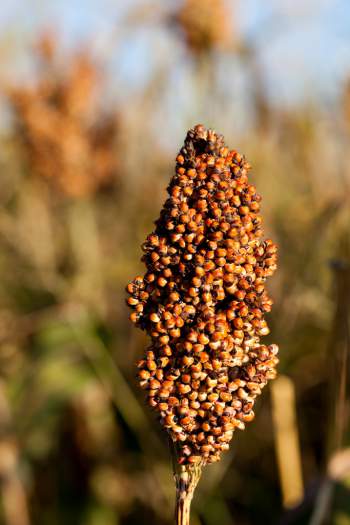Millet is a prominent grain that can reduce many health ailments. However, this gluten-free grain can trigger allergic reaction in few unfortunate people.
According to a journal published on US National Institute of Health, millet allergy is rare. Further it states a case of 21-year old person with asthmatic effect as been registered. After testing for mixture of grains, millet allergy was confirmed. (1)
Researchers say that miller allergic reaction may trigger after inhaling or ingesting common millet. In some cases people also experienced reaction after inhaling bird food.
When a hypersensitive person ingests millet, proteins in this nutritious diet are wrongly treated as a threat by immune system. So to combat them, IgE antibodies are released. Thus a chemical reaction may be stimulated resulting in different allergic signs.
Symptoms of Millet Allergy

US National Institute of Health states that inhaling millet or bird food may result in asthma and ingesting may lead to anaphylaxis condition.
However, it’s very rare.
A study carried on 7 to 10 patients with millet allergy confirmed the availability of IgE antibody of millet extract. In 94% of these people, protein with 36 kDa was identified.
Another study states that other cereals like Wheat, Maize, Rice, Finger Millet, Pearl Millet and Sorghum may trigger allergic reaction in people who’re sensitive towards millet.
In some case Rice didn’t trigger allergy symptoms. So, its better you confirm with the allergist before ingesting any grain.
The first case of millet allergy is of a 25 year person who experienced anaphylaxis situation after ingesting millet. Symptoms experienced include, periorbital angioedema (swelling of eyes), tightness of throat, infection in eyes, wheezing, abdominal pain, rigorous itching and difficulty in breathing.
After eating a cookie with millet, 32 old women experienced itchy throat, respiratory problems, swelling of face, tightness of throat, itching on soles and palms, low blood pressure and narrowing of airways.
Other symptoms like swelling of tongue, hives, oral allergy syndrome, and asthma can be seen.
Diagnosis
- A person must get diagnosed before confirming the allergen by himself. Sometimes, it will be other allergic food that triggers the reaction and you may avoid millet.
- An Allergist will conduct a skin-prick test by exposing your skin to various substances. A positive result shows the availability of the IgE antibody.
- Avoiding is the most effective way to treat any food allergic reaction. However, an allergist or a dermatologist will prescribe some medication and steroid creams if needed to reduce allergic symptoms.
- Check the ingredient list before purchasing. Because of its health benefits, millet is incorporated in most food products. Make sure you don’t ingest millet or dishes that include even a small quantity of this grain.
What you should do, if you notice these symptoms?
If you know that you have taken millet in any form, and noticed one or more of the above-mentioned signs/symptoms, you should rely on an only a liquid diet for a couple of days. Then start eating millet-free foods. You will immediately get to know, whether or not, you are allergic to millet.
The reaction may cause some serious physical problems including osteoporosis, skin itchiness, and irritable bowel syndrome, etc. If you continuously eat millet, the severity of your problems will only increase. It can even reduce your immune power. In short, you should not take millet allergy lightly. So, what should be done?
- When you are diagnosed with millet allergy, you must avoid taking millet in any form.
- You must have to be very strict with your diet and food choices.
- There are numerous millet-free substitutes, easily available in the market. And, you can always add them to your diet.
- You have to be smarter about your shopping habits. Because, some common food items like bread, breakfast cereals, and pasta, etc. are no longer suitable for you.
- You must have to start checking the ingredients of almost every food item you purchase. Only then, you will be able to avoid millet.
Skin prick test for millet allergy:
Skin prick test is very effective to diagnose the millet allergy. It shows some strong skin reactions from millet. In an experiment, 8 different seeds were mixed and tested for allergies. None of the seeds tested positive in the skin prick test.
But, one blue-coloured component of seed mixture, containing vitamins, fats, minerals, millet, and others tested positive when mixed with 1% saline.
Then the millet seed was tested separately, and the skin prick test was positive again. And hence, making skin prick test a suitable method of testing for millet allergy.
Millet allergy is not a very serious condition and can be improved with slight changes in diet, and lifestyle habits. If you notice any of the above-mentioned symptoms after eating millet-containing food, try avoiding millet for a few days. If you have a millet allergy, you will find it. Otherwise, you should seek medical assistance for diagnosing other allergy or complications.
Let your family and friends know that you’ve millet allergy. So they can take care of your diet.

